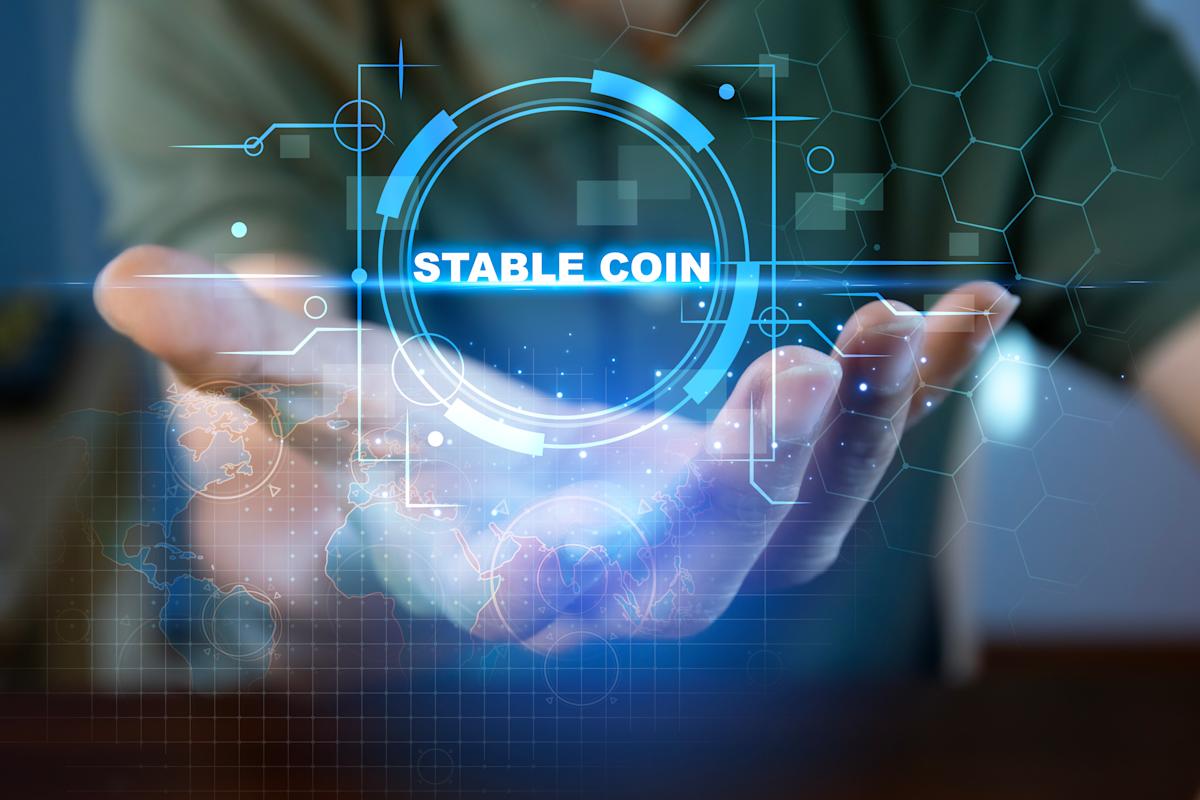Why you might one day use stablecoins in place of credit cards or bank accounts
What’s changing under the GENIUS Act?
The GENIUS Act is the first major federal law regulating crypto. The CLARITY Act, a second crypto regulation bill, recently won approval from the US House of Representatives.
Upon signing the act into law, Trump — whose family owns a stake in World Liberty Financial, which recently launched a stablecoin of its own — said the GENIUS Act “creates a clear and simple regulatory framework to establish and unleash the immense promise of dollar-backed stablecoins.”
The law establishes who can issue stablecoins and requires a 1:1 reserve backing with cash or short-term US Treasury securities. In other words, if you buy $1 of stablecoin, the issuer must keep $1 in cash or cash equivalents in reserve. It also establishes various marketing rules, like prohibiting issuers from advertising that their stablecoins are federally backed or insured, as well as anti-money laundering regulations.
“The GENIUS Act is a major step toward making stablecoins safer and more widely used,” said Erick McAfee, director of growth at pay-as-you-go app Supertab. “With clear rules in place, people will start to see faster, simpler ways to pay and get paid, especially online. Over time, this could change how we think about everyday payments, making them feel more like messaging: quick, easy, and reliable.”
How the GENIUS Act could affect you
The specifics of the GENIUS Act may sound wonky at first blush. But if the law does end up propelling stablecoins into the mainstream, here are a few things you can expect.
More merchant acceptance… but what’s in it for you?
Credit card processing fees can run as high as 3.5%, plus merchants pay a flat fee for each transaction. Meanwhile, traditional payment methods can often take several days to settle.
By comparison, stablecoin transactions typically cost less than $0.1 and offer near-instant settlement. Not surprisingly, many businesses are expected to embrace stablecoins and the potential cost and time savings.
As a customer, you may not reap many benefits by paying with stablecoin instead of your credit card right away.
“In the short term, there aren’t that many advantages to paying with a stablecoin compared to a traditional payment card,” said Mike Hudack, CEO of Sling Money, a fintech company that uses stablecoins to facilitate payment transfers. “Traditional payment cards have consumer protections that stablecoins don’t. This will change over time. There’s lots of work going on to address this gap.”
It’s possible that merchants will find ways to incentivize stablecoin payments. For example, a merchant could pass on a portion of their savings from processing fees by giving you a discount when you pay with stablecoins instead of a credit card.
In the long term, you could see retailers issuing their own stablecoins. Both Amazon and Walmart have reportedly toyed with the idea. Doing so would keep customers spending within their ecosystems while also saving retailers money.
But the wider benefit to customers isn’t entirely clear. Investment banking giant Morgan Stanley compared the prospect to digital prepaid gift cards in a recent report to clients. Essentially, you’re giving money to a retailer to hold on to so that you can spend it at a later date.
Greater acceptance of micro-payments
Credit card processing fees make it prohibitively expensive for businesses to accept micro-payments of a few cents to a few dollars. But micro-payments could gain acceptance if stablecoin usage takes off.
“Before, sending someone a few cents wasn’t worth it because the fees were higher than the payment itself,” McAfee said. “With stablecoin, you can support creators, pay per article or feature, or tip someone instantly, without worrying about cost or delays. It supports entirely new monetization models that reward engagement, not just big purchases.”
Faster, cheaper international transfers
If you’ve ever sent funds to loved ones in another country, you’re no doubt familiar with the pain points of making international transfers. The World Bank estimates that remittances cost the sender about 6.62% of each transfer, which amounts to about $31 of a $500 transfer. International wire transfers can also take anywhere from one to five days to complete.
Wider adoption of stablecoins could be a game-changer for international transfers, given the low costs and speed. Cross-border stablecoin foreign transaction fees are minimal, and transfers can be executed immediately.
“What used to take days and cost $30-plus now takes seconds and costs less than a penny,” Hudack said.
Your bank will want in on the action
Given the potential disruption to traditional payment rails, major financial institutions are exploring whether to issue their own stablecoins. Bank of America, JPMorgan & Chase, Wells Fargo, and Citigroup have explored the possibility of issuing stablecoins, both independently or by teaming up.
But the impact on you and your bank account has yet to be seen. Under the GENIUS Act, stablecoin issuers are banned from paying interest on stablecoins held in reserve. Unlike money you might park in a high-yield savings account and earn 3% or 4% interest on, funds held in stablecoins aren’t earning interest.
Also, funds held in stablecoins aren’t insured by the Federal Insurance Deposit Corp. or the National Credit Union Association.
You may not even notice you’re using stablecoins
If the idea of converting your dollars to stablecoins gives you a headache, rest assured: A lot of the changes you could see as the result of broader stablecoin usage won’t require you to understand how stablecoin works.
“At first, stablecoins will just be implemented in the background. Instead of routing through banking rails, your payment might move over a stablecoin network and settle instantly,” Hudack said. “You won’t need to think about ‘converting’ into stablecoins any more than you think about how Netflix streams video through fiber.”
He points to his own platform, Sling Money, as an example: It uses stablecoins to facilitate transfers, but users move money in the same way they would with other platforms.
“The only difference for the end-consumer is that the transaction is near-instant and near-free,” Hudack said. “But the fundamental physics of stablecoins are different than fiat money and enable a lot of new experiences that aren’t otherwise possible.”
Sign up for the Mind Your Money newsletter
Read the latest financial and business news from Yahoo Finance
Content Original Link:
" target="_blank">


![ΗΠΑ: Τουλάχιστον 11 άτομα μαχαιρώθηκε μετά από επίθεση σε Walmart του Μίσιγκαν [βίντεο]](https://www.ingr.gr/images/joomgrabber/2025-07/6bd08de461.jpeg)











![Γάζα: Η στιγμή που το Ισραήλ κάνει ρεσάλτο στο Handala [Βίντεο]](https://www.ingr.gr/images/joomgrabber/2025-07/351a522c96.jpeg)



































